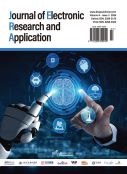Abstract
This paper focuses on the application of interactive media technology in the visual interpretation of traditional graphic urban public spaces in China. Case studies and practical exploration show that interactive media technologies such as projection mapping, interactive devices, virtual reality technology, etc., have realized the diversity of traditional graphics display forms in urban public space. The rich interactive experience design enhances the sense of participation and experience of urban citizens and tourists and promotes the visual culture transmission of traditional Chinese graphics. The future urban public space exhibition is destined to continue to deepen the integration of technology and graphics, promote the visual communication of traditional Chinese graphics visual interpretation in urban public space, and promote sustainable innovation in cultural output in urban public space exhibitions around the world.
References
Lynch K, 1960, The Image of the City, MIT Press, Cambridge, 46–49.
Mitchell WJT, 1995, City of Bits: Space, Place, and the Infobahn, MIT Press, Cambridge, 53–57
Wecity Future Cities Project Group, 2022, Future Cities: Reshaping Urban Competitiveness in the Digital Age, Zhejiang University Press, Zhejiang.
Zhang F, 2021, Urban China; Future Communities: Global Ideas for Urban Renewal and Six Samples, Zhejiang University Press, Zhejiang.
General Office of the CPC Central Committee and the General Office of the State Council, The 14th Five-Year Plan for Cultural Development, viewed January 20, 2024, https://www.gov.cn/gongbao/content/2022/content_5707278.htm?eqid=95494b6300078ab600000006647069a0
Gu Y, 2010, Traditional Patterns, Oriental Press, Beijing.
Jones O, 2021, Chinese Patterns, People’s Literature Publishing House, Beijing.
Asakura N, 2018, The Graphic Composition of Art and Design [Lin Z, Lin Trans.] Jiangsu Phoenix Science and Technology Publishing House, Jiangsu.
Dinkla S, 2002, Interactive Art: From the Object to the Event. Leonardo, 35(4): 549–554.
Liang T, 2014, The Shaping of City Image by New Media Art from the Perspective of City Image. Research of Design Arts, 2014(6): 32–38.
Prinz W, 2013, Embodied Cognition with Heterogeneous Body Representations. Philosophical Transactions of the Royal Society B: Biological Science, 2013(6): 5–7.
Gehl J, 2010, Cities for People, Island Press, Washington.
Bratton BH, 2016, The Stack: On Software and Sovereignty, MIT Press, Cambridge.
Dentsu Group Experience Design Studio, 2015, Experience Design | Creativity is to Change the World [Zhao X Trans.], Communication University of China Press, Beijing.
Liang T, 2019, Environmental Media Design in the Context of Embodied Interaction: Theoretical Framework and Research Approach. Acta Fine Arts, 2019(02): 116–122.
